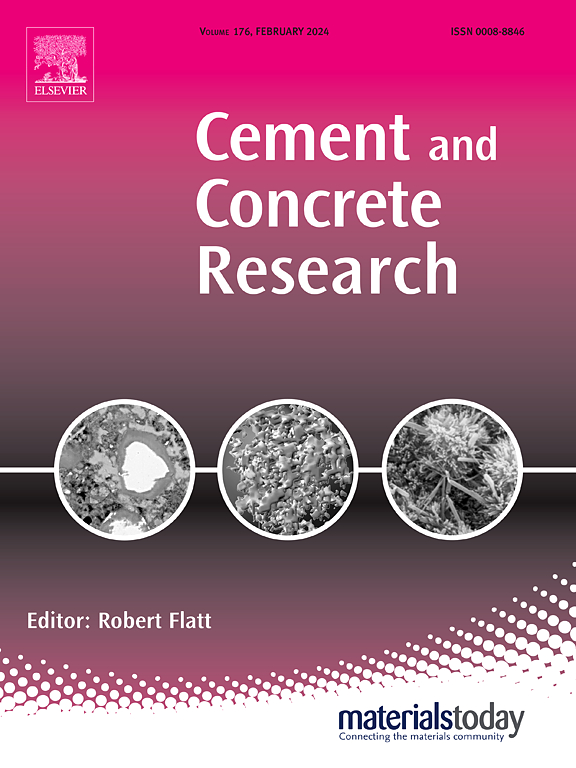Quantifying reactivity of secondary materials as cement substitutes: Modifications to strength activity index methodology
IF 13.1
1区 工程技术
Q1 CONSTRUCTION & BUILDING TECHNOLOGY
引用次数: 0
Abstract
Strength activity index (SAI) testing often serves as the benchmark for other reactivity tests, such as the rapid, relevant, and reliable (R3) test. However, the flaws in the SAI methodology compromise its accuracy. In this study, the SAI test is revisited and intensively modified by decoupling SCM physicochemical effects and mitigating the influence of SCM density and water sorption. The modified SAI test is validated using quartz powder (QP) and six secondary materials, including fly ash (FA), ground granulated blast furnace slag (GGBFS), recycled concrete powder (RCP), carbonated RCP (CRCP), and thermoactivated RCP (T650 and T750). The results of the modified SAI test closely align with those of the simplified R3 test (R2 > 0.90), confirming the reactivity ranking: GGBFS ≈ FA > T750 ≈ T650 > CRCP > RCP ≈ QP. Moreover, the application conditions of the modified SAI test are also identified. In summary, this study contributes to reliable reactivity quantification to support appropriate SCM utilization in cementitious systems.量化作为水泥替代品的二次材料的反应性:对强度活性指数方法的改进
强度活度指数(SAI)测试通常作为其他反应性测试的基准,如快速、相关和可靠(R3)测试。然而,SAI方法的缺陷损害了其准确性。在本研究中,通过解耦SCM的物理化学效应,减轻SCM密度和吸水率的影响,对SAI测试进行了重新审视和深入修改。采用石英粉(QP)和粉煤灰(FA)、磨粒高炉渣(GGBFS)、再生混凝土粉(RCP)、碳化RCP (CRCP)和热活化RCP (T650和T750) 6种二次材料进行了改良SAI试验。改良SAI试验结果与简化R3试验结果接近(R2 > 0.90),确定了反应性排序:GGBFS≈FA >; T750≈T650 > CRCP > RCP≈QP。此外,还确定了改进后的SAI试验的适用条件。总之,这项研究有助于可靠的反应性量化,以支持在胶凝体系中适当使用SCM。
本文章由计算机程序翻译,如有差异,请以英文原文为准。
求助全文
约1分钟内获得全文
求助全文
来源期刊

Cement and Concrete Research
工程技术-材料科学:综合
CiteScore
20.90
自引率
12.30%
发文量
318
审稿时长
53 days
期刊介绍:
Cement and Concrete Research is dedicated to publishing top-notch research on the materials science and engineering of cement, cement composites, mortars, concrete, and related materials incorporating cement or other mineral binders. The journal prioritizes reporting significant findings in research on the properties and performance of cementitious materials. It also covers novel experimental techniques, the latest analytical and modeling methods, examination and diagnosis of actual cement and concrete structures, and the exploration of potential improvements in materials.
 求助内容:
求助内容: 应助结果提醒方式:
应助结果提醒方式:


